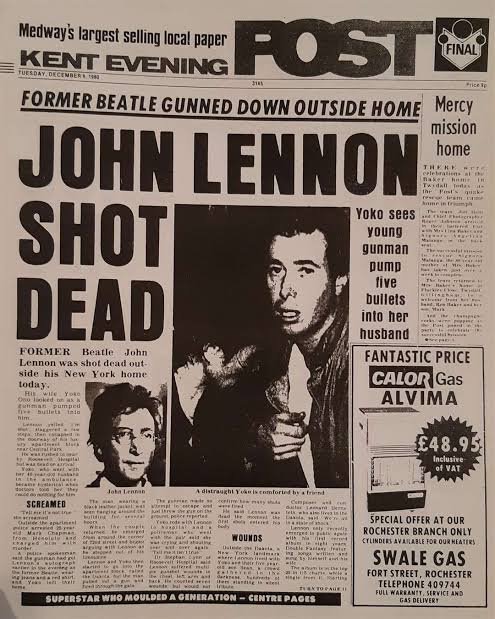The Dream Is Over: John Lennon Shot Dead Outside His New York Home
On the night of December 8, 1980, the world was robbed of one of its most powerful voices for peace, creativity, and cultural revolution. John Lennon, founding member of The Beatles, was gunned down outside his residence at The Dakota building in New York City. He was 40 years old.
Just hours before his death, Lennon had been enjoying a relatively quiet day, giving interviews and working in the studio with his wife, Yoko Ono. It was a period of new beginnings for the legendary artist. After a five-year hiatus from the music industry to focus on fatherhood, Lennon had recently returned with the album Double Fantasy, a record brimming with themes of love, reconciliation, and hope. It was meant to be the beginning of his next chapter. Instead, it became his swan song.
The tragedy unfolded at approximately 10:50 PM. Lennon and Ono had just returned from the Record Plant studio. As they approached the entrance of The Dakota, a man who had been lingering nearby earlier that day stepped from the shadows. That man was Mark David Chapman, a 25-year-old fan from Hawaii who had traveled to New York with a sinister purpose. Just hours before, Chapman had received an autograph from Lennon on a copy of Double Fantasy. Now, he stood behind him and fired five hollow-point bullets from a .38 caliber revolver. Four of them struck Lennon — two in the back and two in the shoulder.
Staggering forward, Lennon managed to enter the lobby and muttered, “I’m shot,” before collapsing. The building’s doorman rushed to call for help. Lennon was immediately taken by police officers — there was no time to wait for an ambulance — to Roosevelt Hospital. Despite frantic efforts to revive him, Lennon was pronounced dead on arrival at 11:15 PM.
The news spread like wildfire. For many, the initial reports were too unbelievable to accept. This wasn’t just another celebrity death. This was the murder of a man who had symbolized an entire generation’s dreams, ideals, and rebellions. Lennon was more than a musician; he was a poet of peace, an activist, a provocateur, and one-fourth of the band that redefined music and culture: The Beatles.
Crowds began to gather outside The Dakota almost immediately, many of them silently weeping, others holding candles, guitars, or homemade signs. Around the world, millions grieved as if they had lost a family member. In Liverpool, his hometown, church bells rang in sorrow. In Tokyo, people lined up to leave flowers. In New York’s Central Park, fans sang “Imagine” in unison through tears.
Paul McCartney, visibly shaken when approached by reporters the next day, could only say, “It’s a drag, isn’t it?” — words that many initially found cold but later came to understand as the stunned utterance of a man in shock. George Harrison released a statement shortly afterward, saying, “After all we went through together, I had and still have great love and respect for John. I am shocked and stunned.
Yoko Ono was devastated. She later said, “John loved and prayed for the human race. Please do the same for him.” Days later, she made a simple yet powerful request: a global ten minutes of
silence. On December
